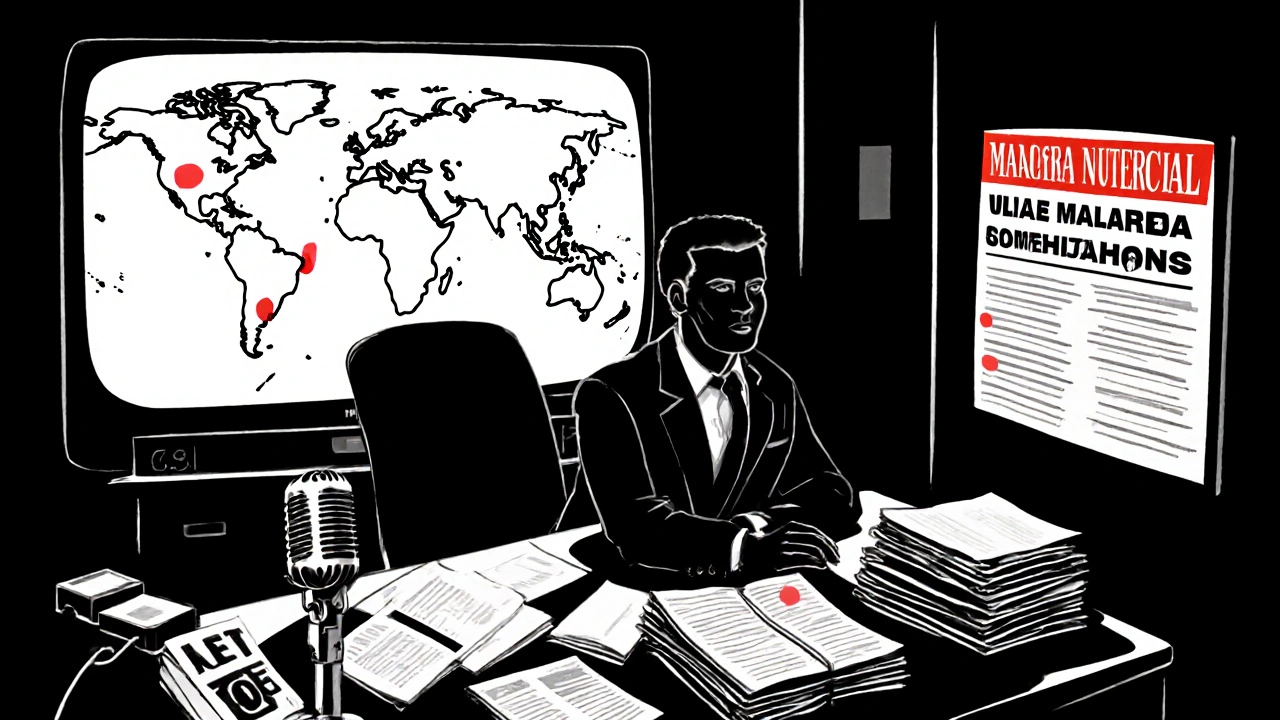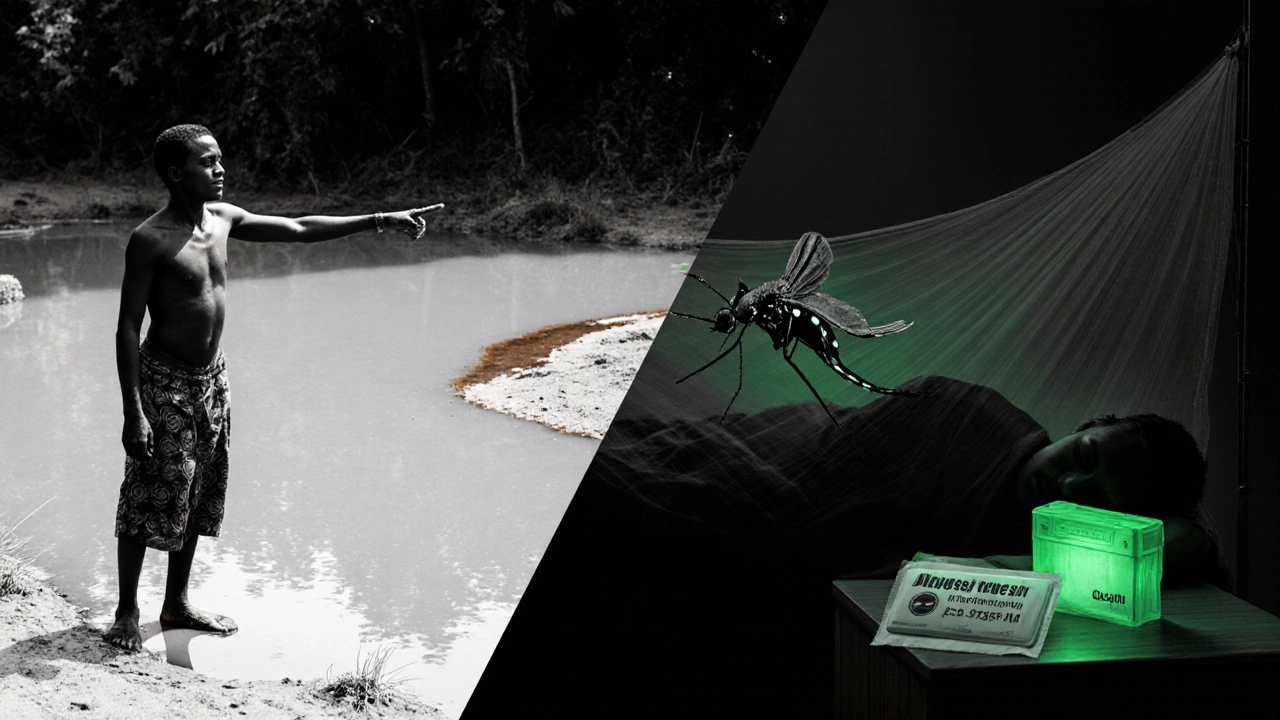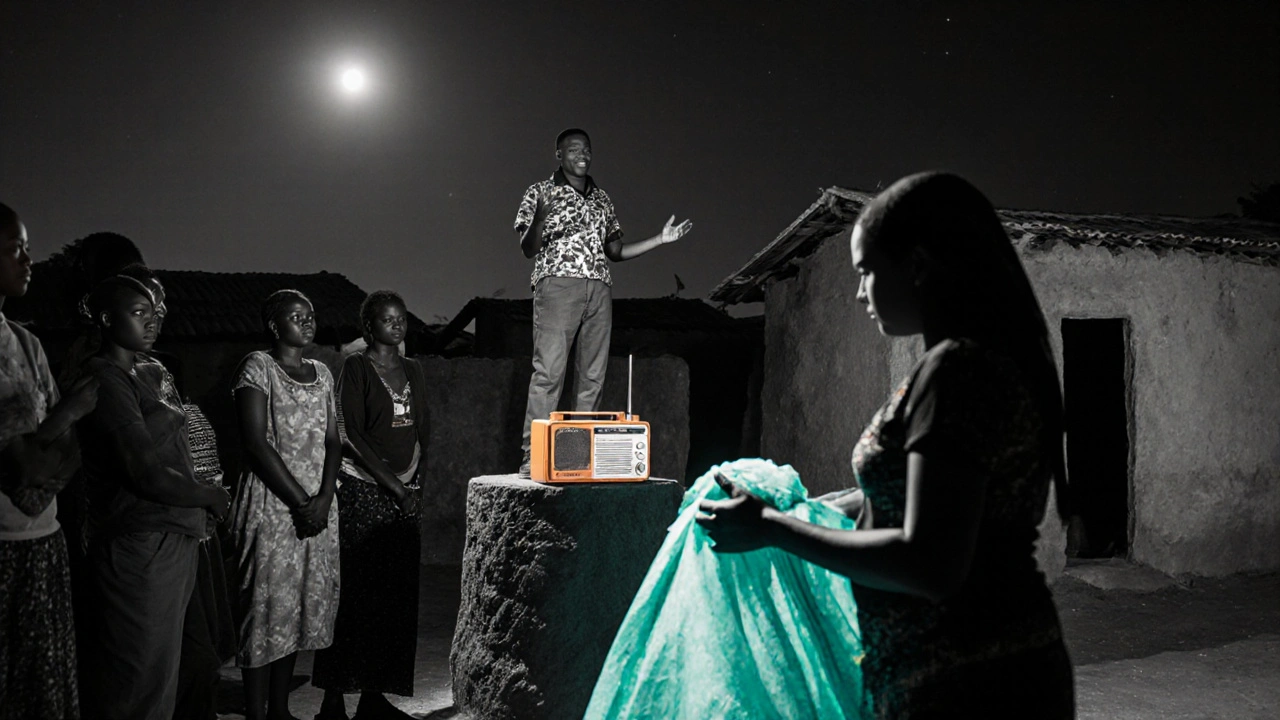
Malaria Myths & Facts Quiz
Test Your Knowledge
Take this short quiz to see if you can identify common malaria myths versus facts. Each question is based on the information in the article.
Loading question...
Quiz Status
0/5 Questions Complete
Your quiz result will appear here
0/5When headlines scream about a disease, the story that follows can shape how millions think, act, and protect themselves. Malaria is a mosquito‑borne disease caused by parasites of the genus Plasmodium. In 2024 alone, the World Health Organization reported 247 million cases and 590,000 deaths, most of them in sub‑Saharan Africa. Yet many people in high‑risk regions still rely on outdated ideas that hamper prevention and treatment.
How the Media Shapes Perception of Malaria
Traditional outlets-newspapers, TV news, and radio-have long been the go‑to sources for health alerts. When a journalist reports a malaria outbreak, they usually quote the World Health Organization (WHO) or the Centers for Disease Control and Prevention (CDC) for credibility. These references lend authority but also set the tone: headlines often focus on death tolls, which can stir fear rather than informed action.
In contrast, social platforms let anyone share a story. A TikTok clip of a traveler recounting a nasty fever can spread faster than a three‑minute public‑service announcement. The downside? Speed often beats accuracy, and myths can snowball before fact‑checkers catch up.
Common Malaria Myths and Facts
Below is a quick reference that many media professionals keep on hand. It pairs a popular myth with the scientific fact that should replace it in any coverage.
| Myth | Fact |
|---|---|
| Malaria only affects tropical "jungle" areas. | While most cases occur in tropical zones, Anopheles mosquito species can thrive in high‑altitude regions, and imported cases appear worldwide. |
| A single mosquito bite always leads to severe illness. | Infections range from mild fever to severe complications; immunity builds after repeated exposure, which is why adults in endemic zones often experience milder symptoms. |
| Bed nets are enough to prevent malaria. | Insecticide‑treated nets (ITNs) reduce risk by up to 60%, but combining them with indoor residual spraying and prompt treatment offers the best protection. |
| Malaria can be cured with antibiotics. | Effective treatment requires Artemisinin‑based combination therapy (ACT), not antibiotics, unless a secondary bacterial infection is present. |
| There is no vaccine against malaria. | The RTS,S/AS01 vaccine, approved in 2021, reduces severe malaria in children by about 30% and is being rolled out in pilot programs across Africa. |
Effective Media Strategies for Raising Awareness
Good campaigns start with a clear audience profile. In rural Kenya, radio remains king; in Lagos, Instagram stories reach teens. Here are three pillars that work across channels:
- Local language storytelling - Translate core messages into Swahili, Yoruba, or Hindi, and embed cultural references.
Example: A radio drama where the hero uses an Insecticide‑treated net to protect his family. - Visual proof points - Show actual Rapid diagnostic test (RDT) kits being used in a village clinic. Viewers trust what they can see.
- Actionable calls to action - Direct people to the nearest health post, a free‑distribution point for nets, or a mobile app that maps malaria hotspots.

Leveraging Digital Platforms and Social Media
Social media isn’t just noise; it can be a precision tool. A recent WHO‑backed campaign used a hashtag “#StopMalariaNow” on Twitter and Facebook, generating 1.2million impressions in two weeks. Influencers shared personal stories of surviving malaria after prompt treatment with ACT, driving a 15% increase in clinic visits in the targeted districts.
Key tactics include:
- Short‑form video (under 60seconds) that dramatizes the 24‑hour window for effective treatment.
- Interactive quizzes that debunk myths - users who answer correctly receive a coupon for a free net.
- Geo‑targeted ads that link to a RTS,S vaccine rollout map, helping parents find the nearest vaccination site.
Measuring Impact: Metrics and Case Studies
Without data, you can’t prove a campaign worked. Common metrics:
- Reach: Number of people who saw the message (radio listeners, video views).
- Engagement: Shares, comments, quiz completions.
- Behavior change: Uptick in net ownership surveys, increased RDT usage, vaccine uptake rates.
Case study: In 2023, a partnership between Ghana’s Ministry of Health and a local TV station aired weekly “Malaria Minute” segments. Within six months, net coverage rose from 48% to 68% and reported malaria cases dropped by 22% in the broadcast region.

Challenges and Pitfalls to Avoid
Even the best‑planned messaging can backfire. Common pitfalls:
- Over‑sensationalizing - Fear‑mongering can lead to fatalism (“It’s everywhere, nothing helps”).
- One‑size‑fits‑all language - Urban audiences may ignore rural‑style messages and vice‑versa.
- Ignoring misinformation loops - When a myth spreads, counter‑information must be repeated, not just posted once.
- Neglecting local health infrastructure - Telling people to get treatment is useless if clinics are shut down.
Practical Checklist for Health Communicators
- Identify the primary audience (age, language, media consumption habits).
- Choose at least two channels (e.g., radio + TikTok) to reinforce the message.
- Draft key facts that directly refute the top three local myths.
- Secure a credible spokesperson - a doctor, a survivor, or a respected community leader.
- Include a clear call to action: where to get nets, testing, or vaccination.
- Set up tracking: pre‑campaign surveys, post‑campaign follow‑up, health‑facility data.
- Plan a rapid response plan for emerging myths.
Frequently Asked Questions
What is the most effective way to prevent malaria?
Combining insecticide‑treated nets, indoor residual spraying, and prompt treatment with ACT offers the highest protection. Vaccination with RTS,S adds another layer, especially for children.
Can social media be trusted for health information?
Social media spreads information quickly, but accuracy varies. Look for posts that cite WHO, CDC, or peer‑reviewed studies, and verify with local health authorities.
Why do some people still believe malaria is caused by dirty water?
Historical misconceptions and the visual similarity of water‑borne illnesses have tangled the narratives. Clear messaging that highlights the role of the Anopheles mosquito helps separate the facts.
Is there a cure for malaria?
Malaria can be cured when diagnosed early and treated with the correct regimen of ACT. Delay or misuse of antibiotics reduces effectiveness and can lead to severe disease.
How often should I replace my insecticide‑treated net?
Most ITNs retain efficacy for 3years. Check for tears or loss of insecticide odor and replace them promptly to ensure protection.




Trinity 13
October 16, 2025 AT 14:10When I think about the way media frames malaria, I see a cascade of missed opportunities that we could be fixing right now. First, the headlines scream death tolls, and that triggers panic instead of action. Second, the narrative rarely includes the simple, proven steps that communities can take every day. Third, the lack of local language storytelling leaves a vacuum that rumors love to fill. Fourth, the visual proof points-like showing a rapid diagnostic test in a village clinic-can demystify the disease. Fifth, we need actionable calls that point people to the nearest net distribution point. Sixth, the partnership between health ministries and local radio stations can amplify accurate messages. Seventh, social media is a double‑edged sword; it spreads both myths and facts at blistering speed. Eighth, short‑form videos under a minute can capture attention while delivering critical timing information. Ninth, interactive quizzes not only debunk myths but also reward participants with tangible incentives. Tenth, geo‑targeted ads can guide parents to vaccination sites for the RTS‑S vaccine. Eleventh, regular tracking of reach, engagement, and behavior change turns anecdote into data. Twelfth, the fear‑mongering approach can backfire, creating fatalism instead of empowerment. Thirteenth, a one‑size‑fits‑all message alienates both urban teens and rural elders. Fourteenth, ignoring local health infrastructure makes any call to treatment hollow. Fifteenth, the lesson is clear: combine credible sources, culturally resonant storytelling, and repeated counter‑information to win the battle against malaria.
Rhiane Heslop
October 21, 2025 AT 19:10America leads the fight against malaria and we must not let foreign narratives weaken our resolve.
Eric Parsons
October 26, 2025 AT 23:10Great overview! For anyone looking to dive deeper, remember that ACT (Artemisinin‑based combination therapy) remains the gold standard for treatment, and timely administration-within 24 hours of symptom onset-dramatically reduces mortality. Also, the RTS,S/AS01 vaccine, while not a silver bullet, provides an additional layer of protection for children in high‑risk areas. Pairing these medical interventions with insecticide‑treated nets and indoor residual spraying creates a comprehensive defense strategy.
Mary Magdalen
November 1, 2025 AT 04:10Look, the data is crystal clear: the only thing standing between us and a malaria‑free future is political will, not just fancy science. If governments stop dithering and pour resources into real‑world distribution of nets, the numbers will plummet faster than any TikTok trend.
Ira Bliss
November 6, 2025 AT 09:10Love the energy here! 🌟 Remember, community champions who speak the local dialect can turn a simple net‑distribution story into a nightly ritual that families actually adopt. Keep the messages bright, hopeful, and packed with clear steps-people respond to optimism as much as they do to facts. 😃
Danny Wakefield
November 11, 2025 AT 14:10Everyone's talking about ACT and vaccines, but have you considered who’s really pulling the strings behind the scenes? The big pharma lobby, the tech giants, the NGOs-all have their own agendas. The “#StopMalariaNow” hashtag looks innocent, but it funnels data straight to corporations that profit from the very interventions they promote. Stay vigilant.
Kripa Mohamed
November 16, 2025 AT 19:10Honestly, that’s just classic fear‑mongering. The real problem is simple: people don’t have nets because they’re too cheap, not because of any grand conspiracy. Get the nets, use them, and stop overthinking.
Angela Allen
November 22, 2025 AT 00:10Great points, thanks for sharing!
Christopher Jimenez
November 27, 2025 AT 05:10Well, while we’re all patting each other on the back, let’s not forget that the very notion of “effective campaigns” is riddled with methodological flaws; the metrics of reach and engagement are, in many cases, vanity statistics, devoid of any substantive impact on malaria incidence; one must ask, are we really moving the needle, or merely shifting the conversation? Moreover, the emphasis on “colorful vocab” distracts from the cold, hard data that suggests e‑learning modules have a 0.2% effect size at best-truly, the discourse is saturated with hype.
Olivia Christensen
December 2, 2025 AT 10:10Totally agree! 😊 It’s amazing how a simple emoji can make a health message feel more approachable, and community members respond better when they see a friendly face on the screen. 🌍 Let’s keep the tone upbeat and the facts solid.
Lauren W
December 7, 2025 AT 15:10Indeed; however, one must critically evaluate the epistemological foundations of these campaigns-are they truly evidence‑based, or merely a veneer of sophistication?; the reliance on “viral” content overlooks the nuanced sociocultural determinants that govern health‑seeking behavior; furthermore, the presumption that “more exposure equals better outcomes” is, at best, a simplification of complex behavioral economics; consequently, a re‑examination of strategy is imperative.
Crystal Doofenschmirtz
December 12, 2025 AT 20:10Thanks for the thorough breakdown. I think it’s important we stay respectful and keep asking questions while we refine our approaches.
Pankaj Kumar
December 18, 2025 AT 01:10When mentoring new health communicators, I always stress that storytelling must be paired with clear actions: know your audience, choose the right mix of channels, and set up simple metrics. A supportive coach helps teams iterate quickly, learn from failures, and celebrate small wins.
sneha kapuri
December 23, 2025 AT 06:10Stop pretending that “soft skills” will fix a systemic crisis! The real issue is that powerful interests keep the status quo; unless we aggressively challenge those forces, no amount of mentorship will matter.